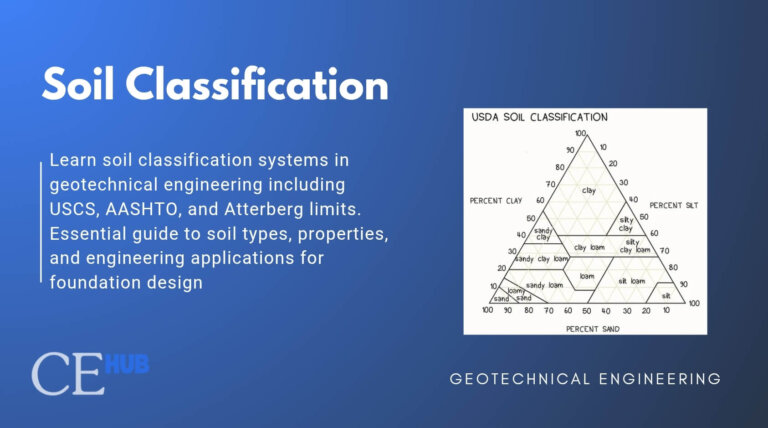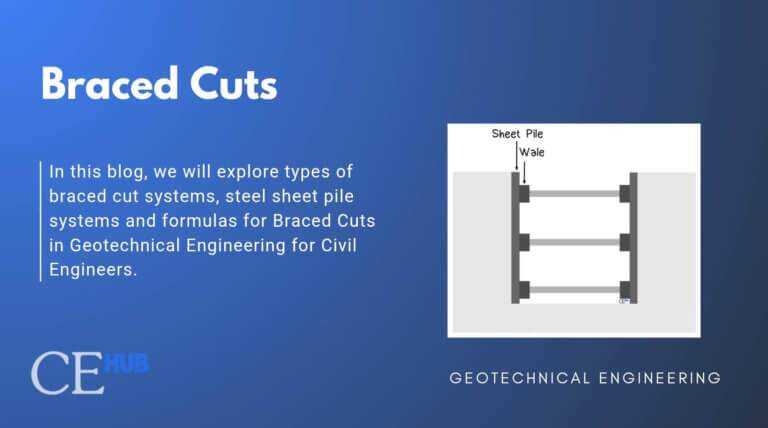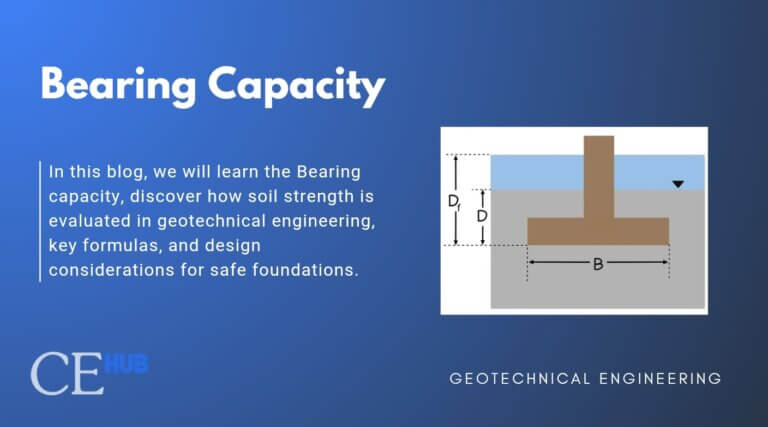What you’ll learn
Slope Stability
What is the importance of Slope Stability in Modern Construction
Slope stability analysis is one of the most important aspects of design and construction in civil engineering. Grasping slope stability is vital for ensuring the safety and longevity of major infrastructure projects. Potential slope failures can lead to catastrophic property losses and risk human lives.
Why Civil Engineers Must Master Slope Stability?
The significance of slope stability extends across numerous critical infrastructure projects:
Transportation Infrastructure
- Highway construction requires careful analysis of cut and fill slopes to prevent roadway collapse
- Railway embankments must maintain structural integrity under dynamic loading conditions
- Proper slope design ensures long-term stability of transportation corridors
Water Management Systems
- Earth dam construction relies heavily on slope stability principles to prevent dam failure
- Canal systems require stable side slopes to maintain water flow and prevent erosion
- Drainage infrastructure depends on proper slope analysis for effective water management
The consequences of inadequate slope stability analysis can be devastating. Engineering failures in this area often result in structural collapse, environmental damage, and in the worst cases, casualties. Civil engineers bear the responsibility of evaluating both natural slopes and excavated surfaces to ensure public safety and project success.
What are the Classification of Slope Types in Engineering Practice?
Infinite Slopes
Infinite slopes represent terrain features that extend over considerable distances with soil masses inclined to the horizontal plane. These slopes appear to continue indefinitely from an engineering perspective, making their analysis unique compared to bounded slope systems.
Finite Slopes
Finite slopes feature defined boundaries with both base and top surfaces, creating limited height configurations. This category encompasses the inclined faces commonly found in:
- Earth dam construction
- Embankment systems
- Excavation projects
- Retaining wall backfills
Both natural and man-made slopes fall into these categories, each requiring specific analytical approaches based on their geometric and material characteristics.
What are the common causes of slope failure?
Understanding failure mechanisms enables engineers to implement appropriate preventive measures:
Environmental Factors
- Gravitational forces acting on slope materials create constant stress conditions
- Intense rainfall increases pore water pressure and reduces soil strength
- Seepage water flow can undermine slope stability through erosion and pressure buildup
- Surface erosion gradually weakens slope integrity over time
External Loading Conditions
- Earthquake activity introduces dynamic forces that can trigger slope failure
- Human activities such as excavation, construction, and traffic loading alter stress distributions
Key Terminologies
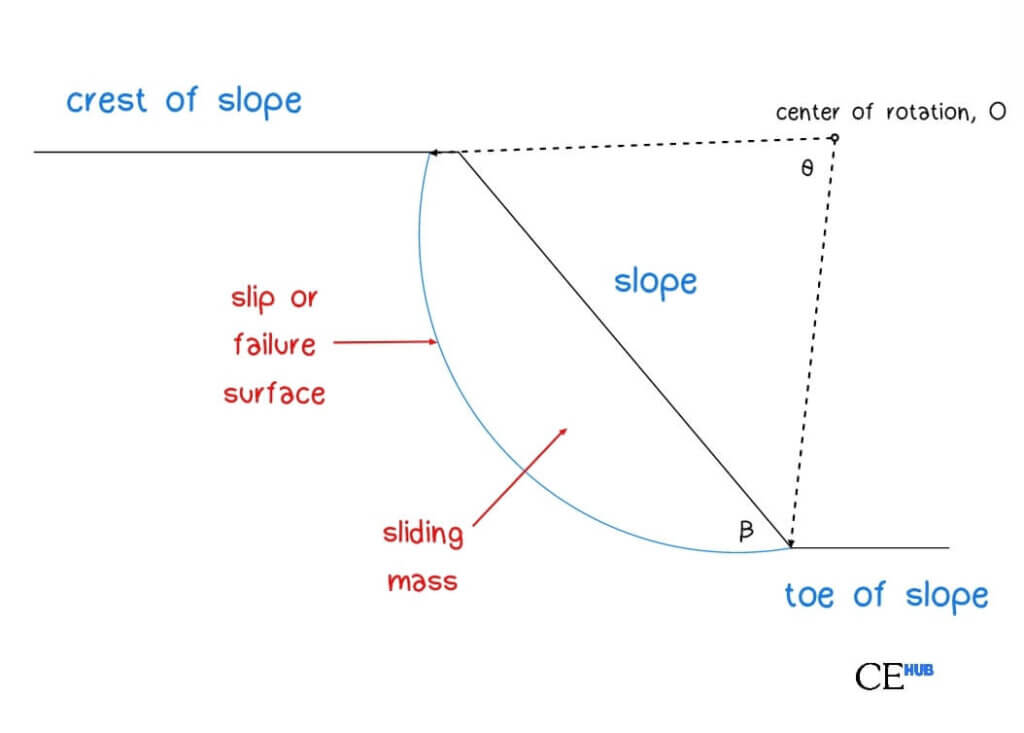
- Slip Zone: A thin soil layer that reaches critical stress conditions, initiating movement of overlying soil mass
- Slip Surface: The sliding surface along which soil movement occurs during slope failure
- Sliding Mass: The volume of soil contained between the failure plane and ground surface
- Slope Angle: The inclination angle measured from horizontal, critical for stability calculations
Types of Failure Mechanisms
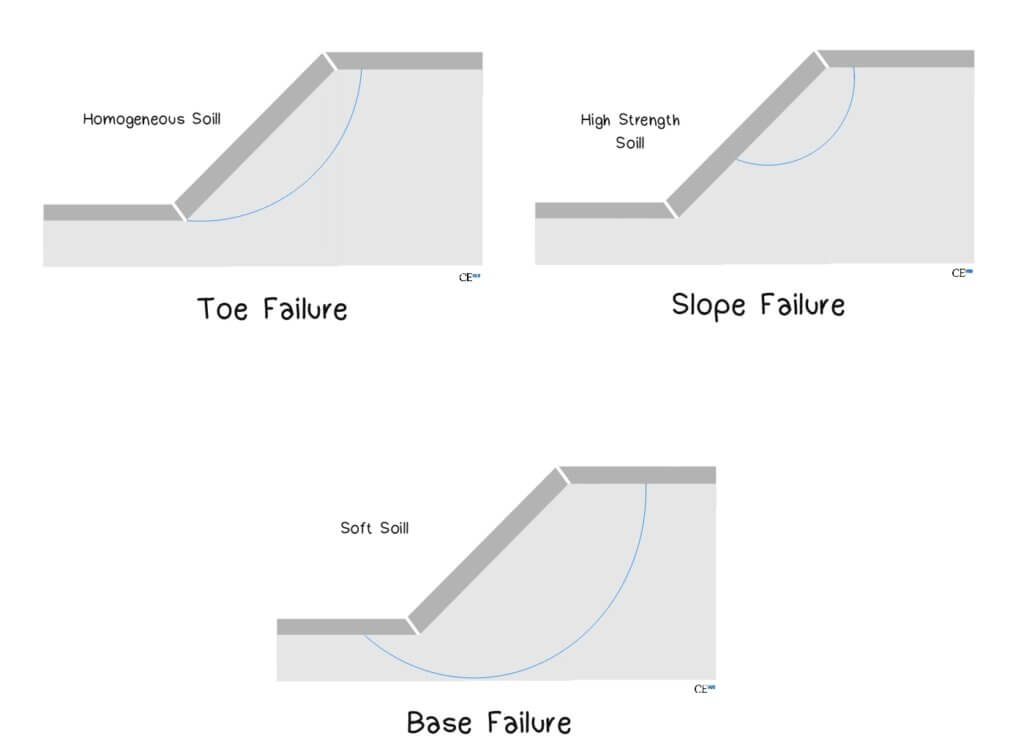
Face or Slope Failure
This failure mode occurs when slopes have steep angles and strong soil conditions at the toe. The failure surface intersects the slope face, creating a relatively shallow sliding mass.
Toe Failure
Toe failure develops when the failure surface passes through the slope toe area. This mechanism typically occurs in steep, homogeneous soil conditions where uniform material properties exist throughout the slope.
Base Failure
Base failure represents the most serious failure mode, with the failure surface passing below the toe level. This condition typically develops when underlying soil layers are significantly weaker than the slope material, creating deep-seated instability.
Factor of Safety in Slope Analysis
The factor of safety provides a quantitative measure of slope stability, defined as the ratio between available shear strength and mobilized shear stress along potential failure surfaces. This parameter helps engineers determine acceptable risk levels for different project types.
![]()
Shear Strength Fundamentals Soil shear strength follows established geotechnical principles, incorporating both cohesive and frictional components that resist sliding forces.
![]()
where:
c = cohesion![]() = angle of internal
= angle of internal ![]() =normal stress on the potential failure surface
=normal stress on the potential failure surface
Also, the mobilized shear strength is given by: ![]()
therefore:
![]()
Analysis of Infinite Slope
Without Seepage
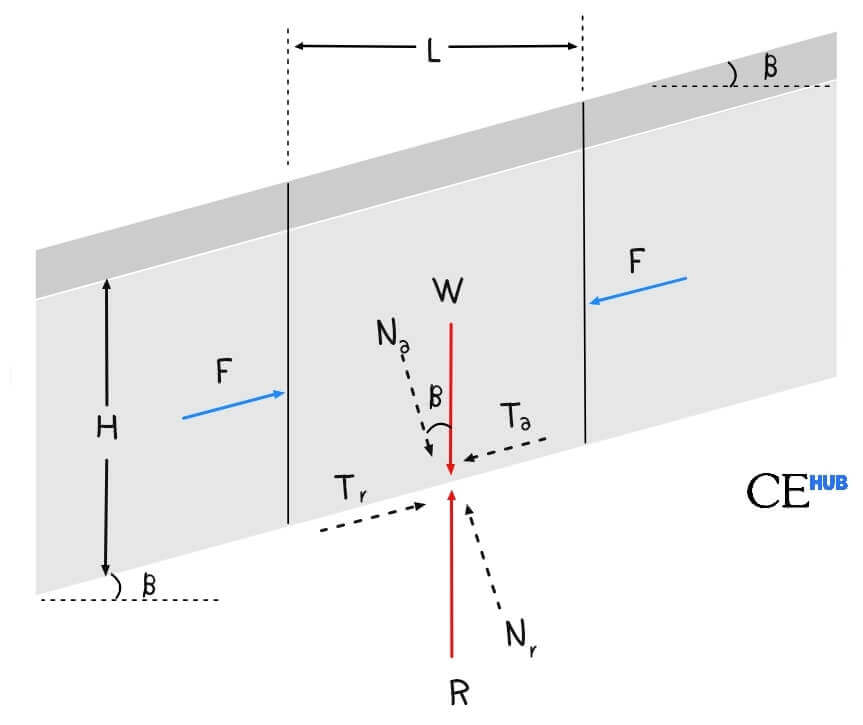
![]()
With Seepage
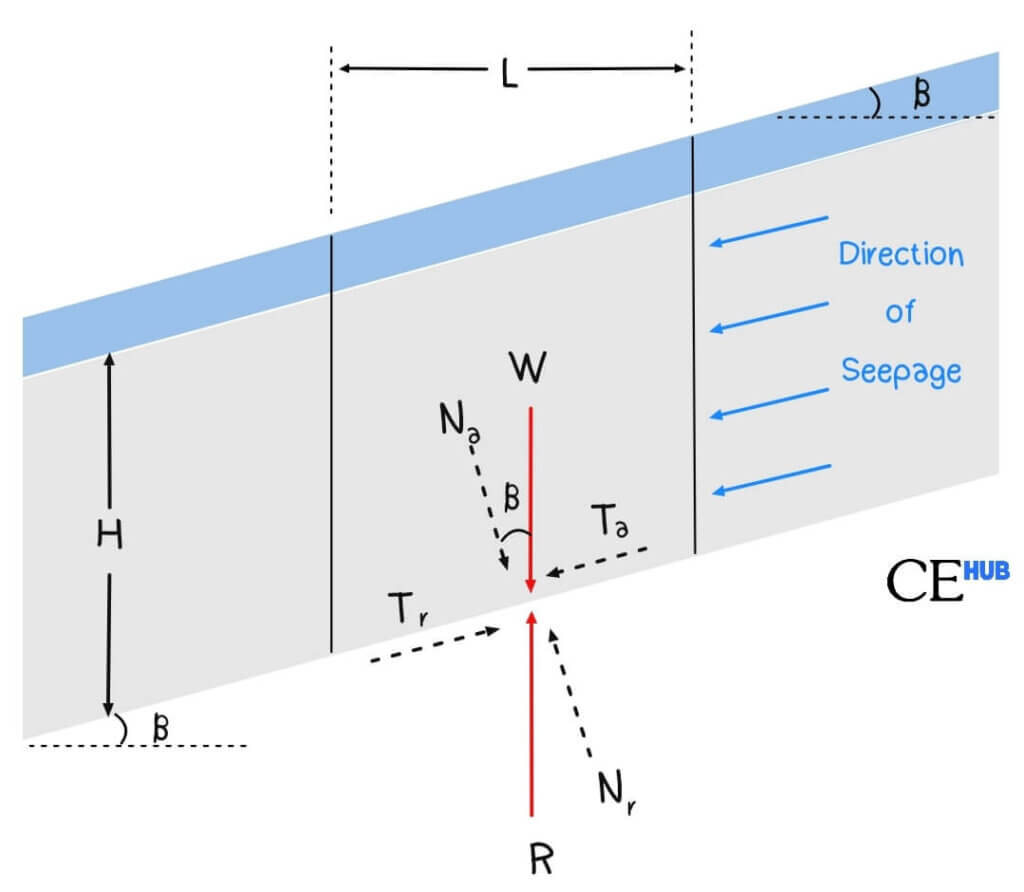
![]()
where:![]() = saturated unit weight of soil
= saturated unit weight of soil ![]() = effective unit weight of soil
= effective unit weight of soil
Analysis of Finite Slope
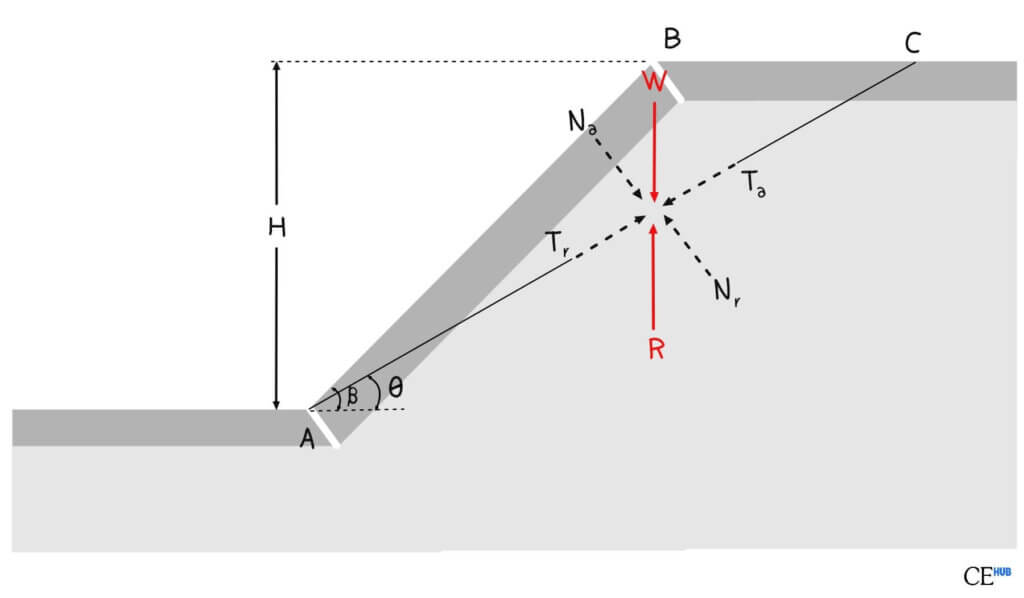
since m is the stability number:
![]()
The equation can also be written as:
Analysis Cases for Different Soil Types
Case I: Cohesionless Soils Analysis focuses on frictional resistance without cohesive strength components, typical in sandy soils and granular materials.
Case II: Cohesive Soils Pure clay conditions where shear strength derives primarily from cohesion rather than internal friction.
Case III: Cohesive-Frictional Soils Mixed soil conditions incorporating both cohesive and frictional strength components, representing most natural soil conditions.
References:
Holtz, R. D., & Kovacs, W. D. (1981). An introduction to geotechnical engineering. Prentice
Hall.Das, B. M. (2013). Fundamentals of geotechnical engineering. Cengage Learning

